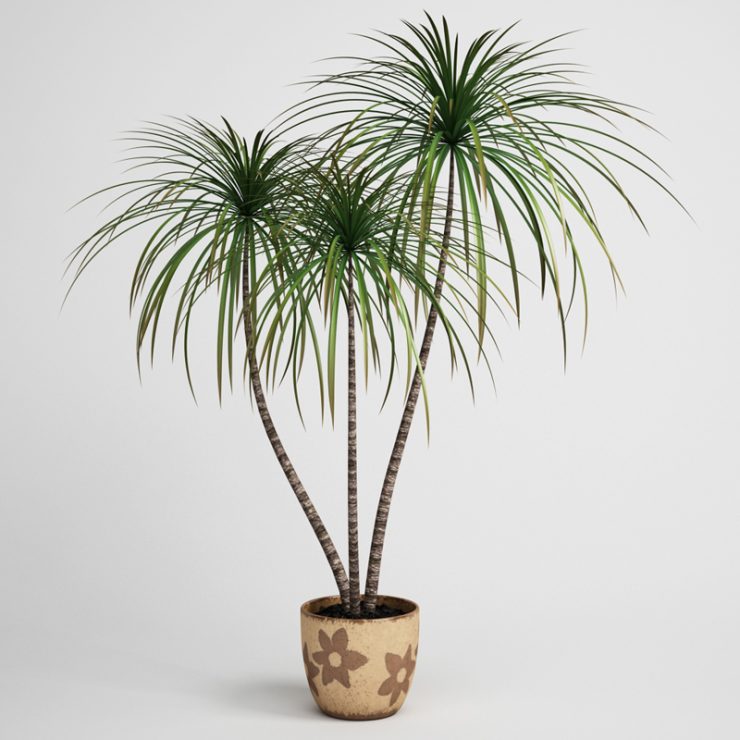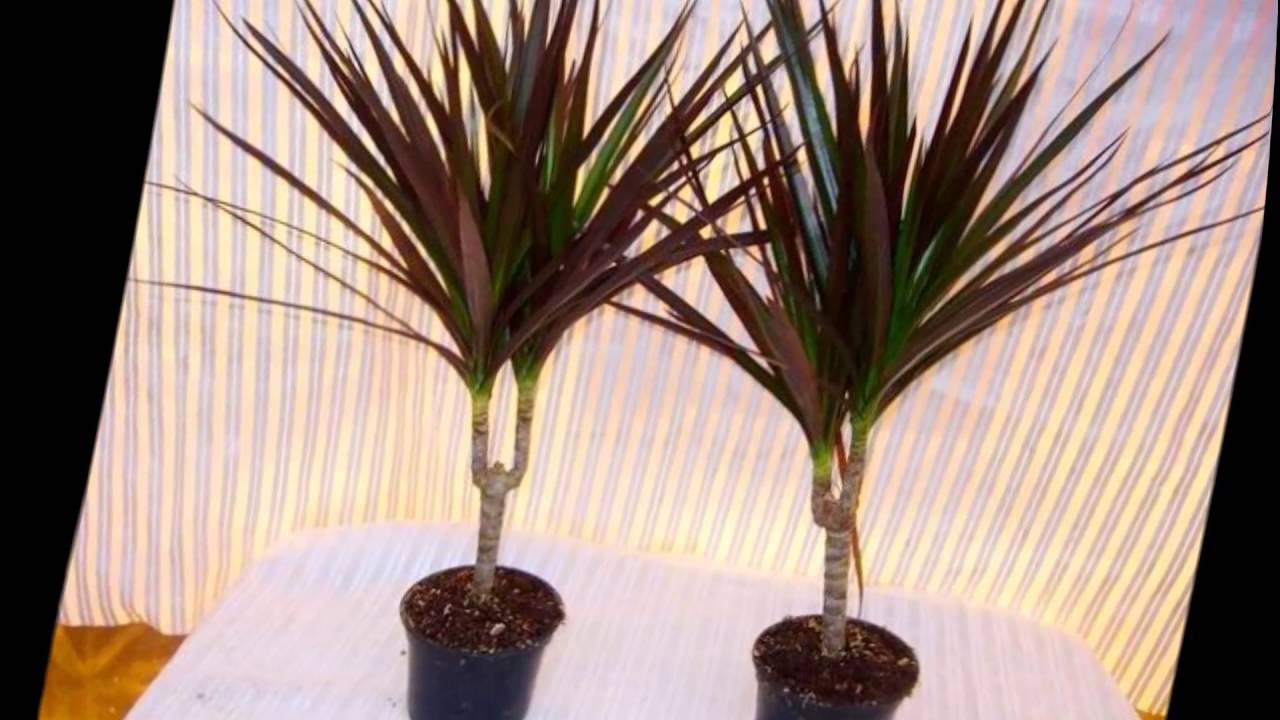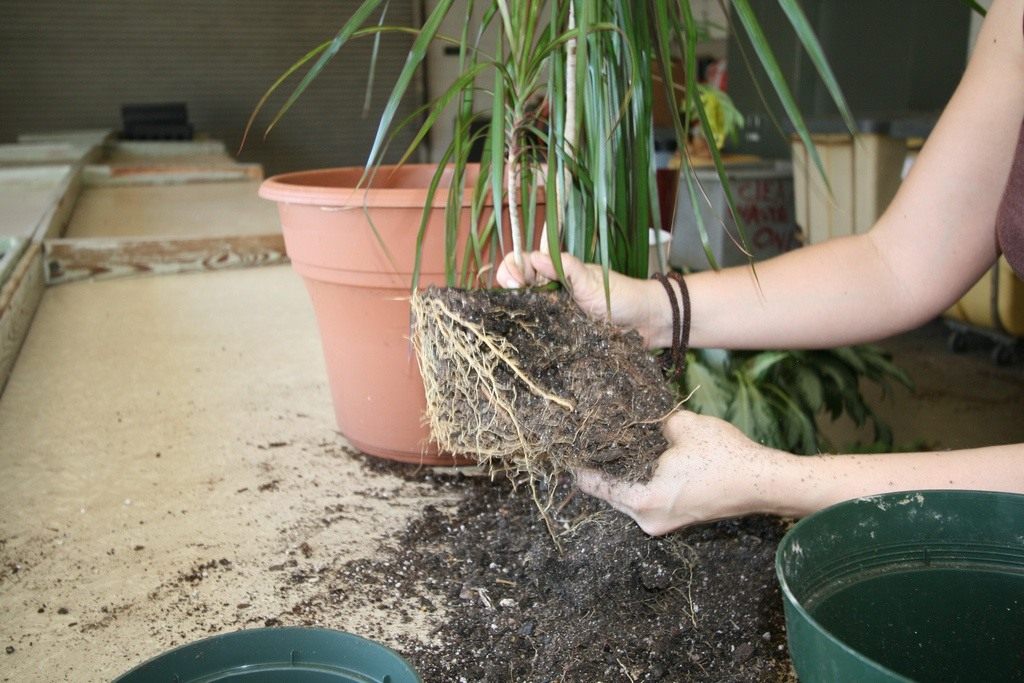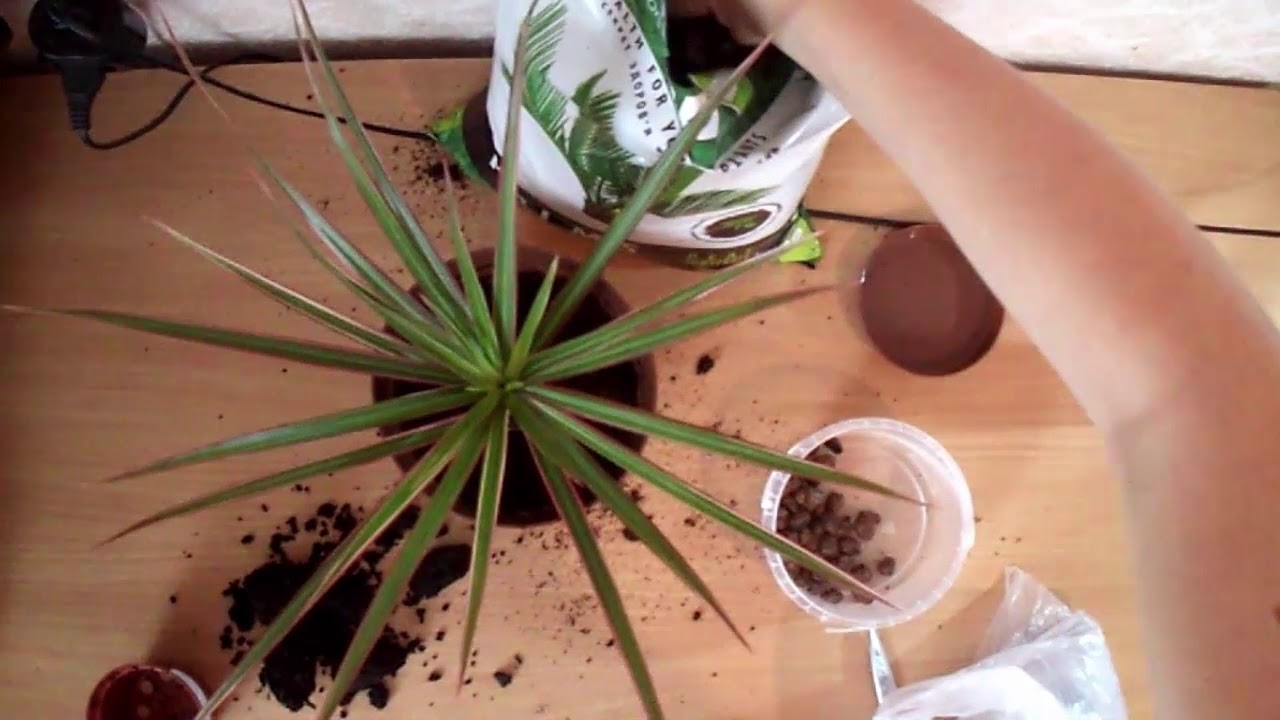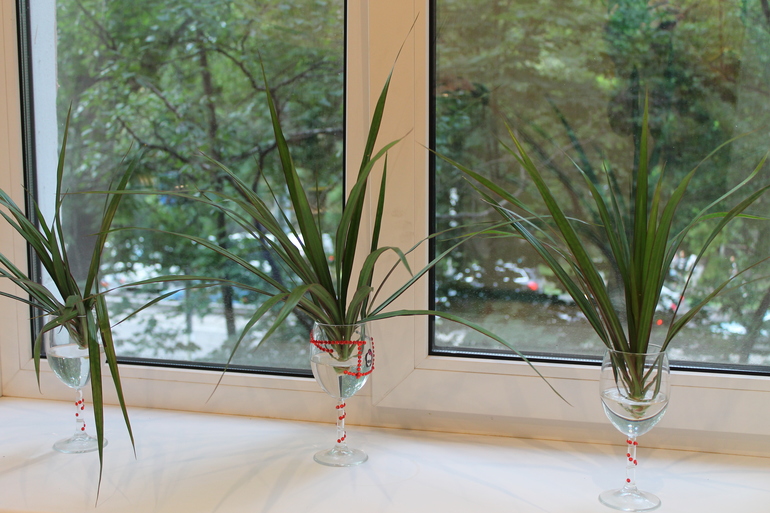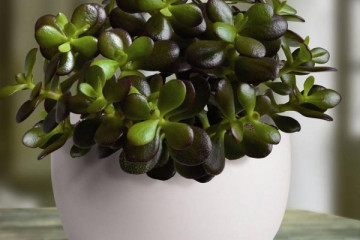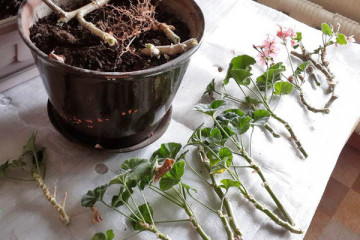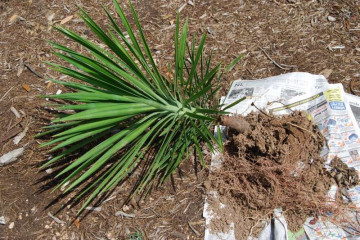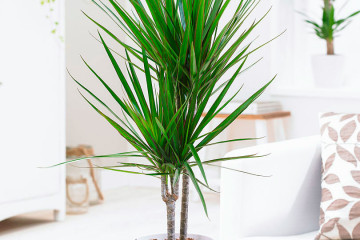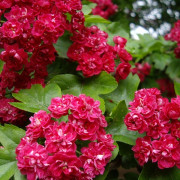How to transplant a dracaena, and is it possible to cut the roots of a dracaena when transplanting
Content:
Tropical palms have long ceased to be exotic in domestic homes. But novice growers continue to confuse externally similar plants with each other.
When the question arises of how to transplant dracaena and care for it, some are guided by the recommendations regarding yucca. In order not to harm the tree, they approach the process competently.
When a transplant is needed
All indoor plants need to be transplanted periodically. A young dragon tree is moved from container to container every spring to stimulate growth. In the future, the plant can be kept in one pot for several years.
Sometimes there are times when an unplanned move is required:
- waterlogging led to root decay;
- dracaena is attacked by pests;
- the plant withers due to a poor substrate;
- the palm tree managed to outgrow earlier than planned, and the roots climbed out.
Dracaena is also transplanted after a new bush is brought home. There are many reasons for the procedure, the rules for its implementation are the same.
There is another situation when the trunk or its top accidentally breaks off. It is a pity to lose a beautiful plant, so it is planted in a new container. The technology is somewhat different here.
Home transplant
An adult palm is moved to a new container every 3-4 years. The older she gets, the more difficult it is to do this. When the dracaena turns into a real tree, then transplanting is used in extreme cases. Usually, fresh soil is poured on top to cover the roots.
Moving to a new, more spacious container stimulates the indoor plant to grow. When transplanting a young flower, they adhere to the following rules:
- taking into account biological characteristics, planting is carried out in the spring; when forced to move in the autumn-winter period, it is more difficult for dracaena to adapt in another pot;
- the tree is not watered for a couple of days before extraction; it is easier to extract the plant from the dried soil without injuring the root;
- when transferred to another container, they try to keep an earthen lump intact on the roots (if the reason is not in a bad substrate);
- if the soil is old, depleted in microelements, then it is better to completely remove it from the roots with a stream of warm water;
- the drainage layer should occupy at least 1/8 of the flower pot;
- adaptation of dracaena depends on the comfort of the transplant conditions:
- the quality of the potting mix;
- correctly selected pot;
- compliance with hygiene standards.
Thinking about how to transplant dracaena correctly, they look at the area of the plant where the trunk passes into the rhizome. The neck is not buried, only slightly sprinkled.
Transplanting a purchased flower
If a new dracaena has appeared in the house, a transplant at home is carried out immediately. Plants from the flower shop are in containers filled with shipping soil. It is characterized by a high peat content.
Such a substrate is able to retain moisture for a long time, but its air permeability is poor.Therefore, this soil is not suitable for long-term cultivation. Otherwise, the root system will rot and the flower will die.
The container in which the dracaena was purchased will not work either. The temporary container is not suitable size for the subsequent development of the palm tree. And the very material from which the pot is made can be fragile.
Required tools
In order for the plant to be transplanted according to all the rules, it is important not only to choose a suitable pot, but also to stock up on tools:
- garden shears (secateurs);
- knife with a sharp blade;
- basin for water;
- substrate bucket;
- spray;
- scoop.
With the help of tools and devices, the extraction and movement of the dracaena will take place with maximum comfort.
Choosing the right pot
To grow a healthy palm tree, you need to choose the right pot for the dracaena. The new container should not only be in harmony with the interior, but also meet the following requirements:
- the diameter is 2-3 cm larger than the previous one;
- for a small plant, the shape of the pot does not matter, an adult palm tree (with a trunk diameter of at least 40 cm) is transplanted into a stable glass-shaped container;
- for a tall plant exceeding 35 cm, the minimum pot diameter is 15 cm;
- it is better if there are several holes in the bottom; this will avoid excess moisture in the substrate.
Any material can be used, but the pot must be strong and stable. Therefore, strong plastic is also suitable - it does not reduce the life processes occurring in the plant.
The new pot should be processed before planting. First, it is washed with a warm soapy composition. Then rinse well with clean water.
Dracaena soil
In order not to "rack your brains" what kind of soil is needed for dracaena, they purchase a ready-made balanced substrate in the store. Although experienced growers prefer to prepare the soil with their own hands.
The soil for dracaena can be anything - the flower is unpretentious in this regard. It is best to grow your palm in the correct substrate. The best option is a drained soil containing peat with an acidity of 6.0-6.5 pH. Its composition should be about ½ part. The rest is accounted for by:
- leafy soil and compost - 1 part each;
- sod land - 2 parts.
It is advisable to add a little river fine sand to avoid soil caking. Crushed brick or expanded clay balls will help to enhance the drainage effect.
Before using the soil for dracaena, it is disinfected. You can douse with boiling water and pour a thin layer on the newspaper to dry naturally. Or ignite the soil in the oven and let it cool down. Before pouring the soil into the pot, water it. There should be enough water so that the moistened soil easily collects when compressed into a lump, but immediately crumbles when the palm is opened.
How to properly transplant dracaena
When everything necessary for the procedure is prepared, they proceed to the main steps. A step-by-step algorithm on how to transplant a dracaena at home looks like this:
- newspapers are spread on the floor or table (as it is convenient for anyone), a basin of water and a container with soil, a bag with drainage are placed;
- the flower pot is turned over at an angle over the newspapers and, patting the bottom, carefully remove the dragon tree;
- revision of the roots;
- if damage, rotting is found, these roots should be cut off;
- the places of the cuts are treated with charcoal powder to avoid infection, or the roots are immersed in a solution of potassium permanganate for several hours;
- then the rhizome is sprayed with water from a spray bottle;
- a drainage layer is laid on the bottom of the pot;
- poured a little earth and planted dracaena in the center;
- holding the trunk with one hand, take a scoop in the second and gradually sprinkle the roots with earth.
So that the substrate is evenly spaced between the roots and compacted, the container is shaken from time to time.
Do not fill the pot with earth to the top. Leaving a small ledge will make watering easier. The substrate is immediately moistened after transplantation.
Features of transplanting a young plant
Experts advise replanting the dracaena of the first 3 years of life annually. This will allow you to quickly build up leaf mass. The landing technology does not differ from that described, but a number of features should be taken into account:
- the flower pot is filled with soil mixture to half;
- an ornamental plant is removed from the previous container with extreme caution, trying not to break fragile roots;
- having installed the dracaena in the center of the new pot, the roots are evenly distributed over the surface of the soil.
Then carefully fill the pot with fresh substrate. In order not to damage young roots, the soil is not tamped.
If dracaena breaks off
If the trunk of a plant breaks, it cannot be immediately planted in the ground without roots. In this case, it is recommended to cut off the top, divide the stem into cuttings 20 cm long. Stem pieces must be planted in a substrate, buried in a horizontal or vertical position.
To begin with, the top is placed in water so that roots can grow, they follow the following rules:
- the liquid in the container is changed for 2-3 days (to avoid the development of bacteria);
- you can protect the plant from infection if you add a couple of tablets of activated carbon to the water;
- when roots appear, you should not immediately plant the top in the soil - use slightly moistened vermiculite or sand;
- put closer to sunlight, but not in direct sunlight;
- a container with a top is placed in a polyethylene greenhouse, which is aired daily;
- to raise the immunity of the rooted dracaena, a little fertilizer for palm trees is diluted in the water and the leaves are sprayed with this composition.
Every day, the airing time increases so that the dracaena gradually gets used to the home climate. Then it remains to do the transshipment of the tree into a permanent pot.
In the described way, a diseased plant is also transplanted, whose roots have rotted. The trunk is cut with a sharp knife at some distance from the surface of the ground, choosing a healthy area without damage.
Dracaena care after transplant
After the dracaena has been planted, you should take care of the conditions for adaptation of the palm tree, providing good care. During this period, the plant will spend all its strength on the formation of new roots.
Agrotechnics after transplant
| Mode | Features of the |
| Watering | · Should be copious, every 2-3 days. Warm settled water is used; Given the origin of dracaena (from a country with a hot, humid climate), the flower needs intensive foliar spraying |
| Temperature | · A tropical plant feels comfortable in rooms where the parameter is maintained at least + 25 °; · Stale air of a palm tree is harmful - regular ventilation is necessary. At the same time, drafts should not be allowed. |
| Lighting | Dracaena loves an abundance of light, but the direct streams of the sun burn the foliage. Therefore, it is better to display plants on east or west windows, curtained with blinds (to diffuse the light flux) |
| Top dressing | Nutrition is brought in during the season of active development (early spring - late autumn). In winter, the fertilizer rate is cut in half and used once a month. |
To mitigate the stress in which the transplanted plant finds itself, it is recommended to add "Zircon" to the water for the first irrigation, which stimulates root growth. It can also be used as a top dressing every 2 weeks.
What problems may arise
Sometimes dracaena does not adapt well in a new pot and starts to hurt. The reasons may lie both in violations of the transplant conditions, and in the failure of follow-up care regimes.
Landing errors:
- Often used containers are used for transplanting indoor flowers. If the pot is disinfected incorrectly, it can cause the development of root damage, from which the dracaena will begin to hurt.
- Some growers immediately create a greenhouse for the transplanted plant. After placing the pot in a plastic bag, they forget to ventilate it. As a result, condensation collects inside, which can provoke a fungal disease.
- Inexperienced indoor flower lovers believe that rooting in a new pot will go faster if you apply frequent watering. Dracaena belongs to succulents and feels more comfortable in poorly moistened soil.
- Drying of the earth is also dangerous - it is difficult for the roots to develop in solid soil. The plant spends all its energy on this process. As a result, leaves wither, turn yellow and fall off.
Usually, 2 weeks are enough for plants to adapt. If, immediately after transplanting, the dracaena drops and even loses foliage, this is a common occurrence. When the situation continues to deteriorate, emergency measures are required:
- revise modes (irrigation, light, temperature);
- adjust the microclimate in the room by adjusting the humidity;
- check if the drainage holes in the pot are not clogged (perhaps they prevent excess moisture from leaving);
- the leaves are sprayed with a growth stimulator "Zircon" (2 drops per glass of water).
If these measures do not give a positive result, the dracaena transplant is repeated, taking another pot and fresh soil.
Having found out what kind of soil the dracaena needs, which pot is suitable, how to properly transplant and care for the plant, it will not be difficult to grow a beautiful exotic palm tree at home. A healthy developed tree will become a real decoration of any interior.
